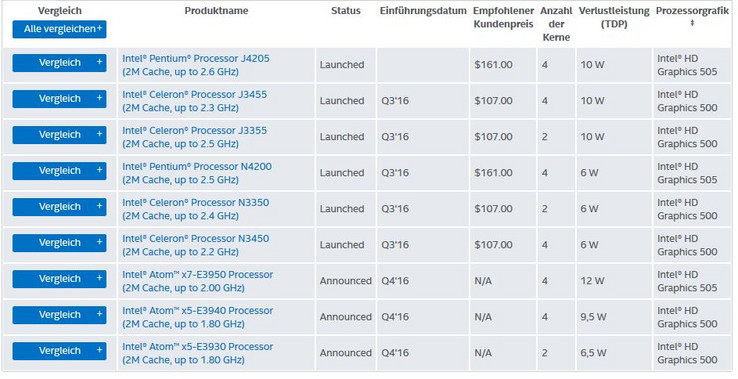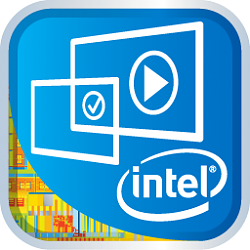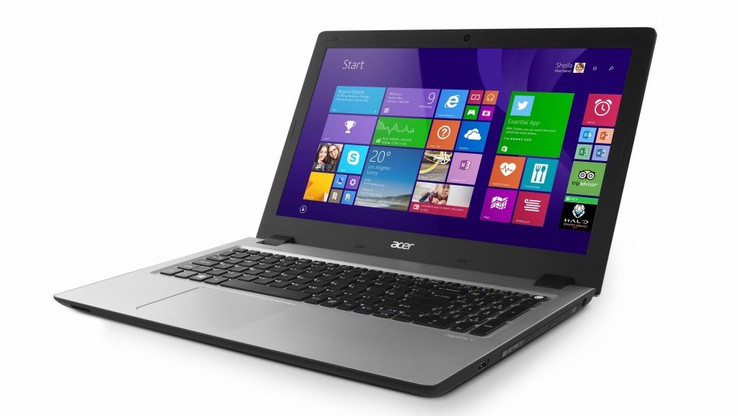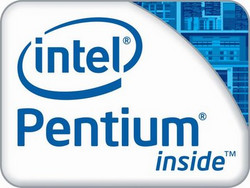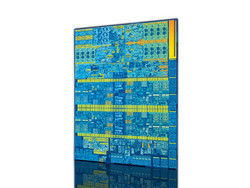Apollo Lake: Kaby Lake for Beginners Review
For the original German review, see here.
Processors which Intel calls Pentium, Celeron, or Atom have always been intended for the lower entry-level range. The same is true for the new generation of these processors, which is called Apollo Lake. Since these processors bring many changes, it is worth taking a closer look at them and test them thoroughly in everyday tasks.
Models
Intel has launched two Pentium and four Celeron processors so far, which are already available in final products including the Acer ES 15, which we use for this test. In addition, Intel has announced three Atom processors. However, these are not available yet, although Intel actually wanted to launch them in the fourth quarter of 2016. However, this might change soon.
Because of their relatively low price and very low power dissipation, these processors are suitable for the entry-level market and the ultrabook/tablet market, since they do not require powerful cooling systems.
Certainly, performance differences also exist within Apollo Lake. First of all, they can be distinguished by name. For example, Pentium processors (Pentium J4205, N4200) constitute the top level, which becomes apparent in clock rate, price, and integrated Intel HD Graphics 505 (the best integrated graphics card within this family). The new Celeron processors (Celeron J3455, J3355, N3350, and N3450) primarily differ from the Pentium processors by featuring the weaker integrated Intel HD Graphics 500 graphics card. As a result, the price is as much as $60 lower than the Pentium processors'. The Intel Atom x7-E3950, x5-E3940, and x5-E3930 are the weakest processors which Intel currently offers. They feature lower clock rates and the Intel HD Graphics 500. Most of these processors might be found in low-end notebooks, since only the Intel Atom x5-E3930 and the Celeron processors are suitable for use in passively cooled tablets due to their low TDP of only 6 Watt.
Changes
In 2016, for the first time in several years, Intel finally brought out a completely new architecture for Atom, Celeron, and Intel processors with Apollo Lake. Previously, the manufacturer has only slightly improved performance and efficiency from generation to generation. However, the new architecture brings a performance boost of 30% compared to its predecessor generation.
The process did not change when compared to the predecessor generation. Alike in Skylake and Kaby Lake, chips are still processed in the 14 nm-FinFET lithography. However, while Intel implemented Hyper-Threading in the new Kaby Lake Pentiums for the desktop market, this feature is now lacking in the notebook variants. According to Intel, they have focused on improving the graphics unit. All new models either use an Intel HD Graphics 505 or 500. As a result, all models of the newest generation support playback of 4K content at 60 Hz (via DisplayPort 1.2), while the previous generation had only supported DisplayPort 1.1 (4K@30 Hz). Overall, Intel has made the biggest progress in terms of the integrated graphics cards in the last years. For example, the Silvermont processors from 2014 had to make do with an integrated graphics unit with only four EUs, while the new models feature up to 18 EUs (depending on the model). In the following, we will clarify the effects in practice.
Test model
We have tested the new architecture in an Acer Aspire ES 15 (the in-depth review is available here), which is powered by an Intel Pentium N4200 and comes with an HDD drive and 8 GB of RAM. Windows 10 Home 64-bit is used as operating system.
We compare it to models of the previous generation with similar price, and to high-end and low-end processors of the Intel Core ix series in order to better assess its performance. We use results in our database from benchmarks and reviews. Further details to each device are available in their reviews.
Benchmark Comparisons
CPU performance
The CPU performance has also improved a great deal. For several years, Intel could only increase the performance by a few percent compared to the predecessor generation. For a better classification, we added the current standard high-end model, the Intel Core i7-7700HQ, to our comparison. We compare the Intel Pentium N4200 in our test model to the Intel Pentium N3710 in the Acer TravelMate B117-M-P16Q.
| Cinebench R15 | |
| CPU Single 64Bit | |
| Intel Core i7-7700HQ | |
| Intel Core i3-4010U | |
| Intel Pentium N4200 | |
| Intel Pentium N3710 | |
| CPU Multi 64Bit | |
| Intel Core i7-7700HQ | |
| Intel Pentium N4200 | |
| Intel Core i3-4010U | |
| Intel Pentium N3710 | |
The benchmarks show that the performance gain of the new generation compared to the previous one is significantly higher than in the past years. For example, the predecessor model is outperformed by almost 30% in in the single-core benchmark. While the performance gain of 10% in the multi-core benchmark is smaller than in the single-core benchmark, it is still noteworthy. With these results, the CPU is about on par with the Intel Core i3-4010u from 2013.
GPU performance
Intel uses two different graphics units in its new low-end processors. We list them in the following with their specifications:
- Intel HD Graphics 500: 12 EUs, up to 700 MHz
- Intel HD Graphics 505: 18 EUs, up to 750 MHz
While the Intel HD Graphics 500 is primarily used in cheaper graphics cards of the Intel Celeron and Intel Atom processors, the top variant of the architecture is reserved for Intel Pentium models. Overall, the new integrated graphics cores show why Intel especially praises them. In comparison to the integrated graphics units of the previous generation, you can see that Intel has made a clearly noticeable progress in this field. Although the GPU performance of the chips is still lower by far than a dedicated graphics card's performance from, for example, Nvidia, the performance boost is nothing to sneeze at. We have also added the integrated graphics card of the Intel Core i7-7700HQ (Intel HD Graphics 630) to our comparison.
| 3DMark 11 - 1280x720 Performance Combined | |
| Intel HD Graphics 630 | |
| Intel HD Graphics 505 | |
| Intel HD Graphics (Bay Trail) | |
The benchmarks show that the performance of the integrated graphics cards has more than doubled in the low-end range in the past three years. Intel's improvements pay off here. However, we have to mention again that the integrated graphics cards from Intel still perform worse than AMD models. However, AMD is currently not a competitor in the notebook market because of too high waste heat.
Real-world performance
Certainly, you cannot expect that systems with entry-level CPUs are capable of excessive multi-tasking or running the newest games in ultra-details and Full HD. This has also been confirmed by our real-world tests (run on the Acer Aspire ES 15 with Intel Pentium N4200). For example, it is possible to edit presentations without limitations, while there are several tabs open in Firefox and listening to music. In addition, Full HD and even 4K videos play without problems (as the new graphics chips also support 4K playback), even though the cooling system performance had to significantly increase when playing 4K content.
The first compromises have to be accepted when running image-editing software (e.g. Gimp, Photoshop). For example, there are occasionally delays between pressing a button and the actual action. This might not sound like an especially serious problem, but it can sometimes interrupt workflow. Using video-editing programs is annoying. Apollo Lake processors are absolutely unsuitable to run these. Those who intend to occasionally play games on a device with an Apollo Lake processor should only run graphically undemanding games.
Gaming
The Acer Aspire ES 15 could only reach 41 fps and 32 fps in League of Legends and Dota 2, respectively, with low settings and Full HD resolution. While this is acceptable for MOBA games, the games do not look particularly good. Those who want to play ego-shooters should pay for a more expensive device from the start, since even the graphically not especially ambitious yet popular Counter Strike: Global Offensive only achieves 35 fps with minimum settings and a resolution of 1024x768 pixels and stutters. This performance might even be too low for absolute beginners. Please note that our test model uses the best integrated graphics card of the Apollo Lake processors with the Intel HD 505.
The power consumption only slightly differs from the previous generation. For example, the new architecture requires slightly less energy thanks to several improvements. However, the difference is small, since the focus is on performance gain.
| Dota 2 Reborn | |
| 1280x720 min (0/3) fastest | |
| Intel HD Graphics 4000 | |
| Intel HD Graphics 620 | |
| Intel HD Graphics 505 | |
| 1366x768 med (1/3) | |
| NVIDIA GeForce 940M | |
| Intel HD Graphics 620 | |
| Intel HD Graphics 4000 | |
| Intel HD Graphics 505 | |
| Counter-Strike: GO | |
| 1024x768 (Very) Low | |
| NVIDIA GeForce 940M | |
| Intel HD Graphics 620 | |
| Intel HD Graphics 4000 | |
| Intel HD Graphics 505 | |
| 1366x768 Medium | |
| NVIDIA GeForce 940M | |
| Intel HD Graphics 620 | |
| Intel HD Graphics 4000 | |
| Intel HD Graphics 505 | |
Verdict
Overall, you can say that Intel finally brings changes in the entry-level processor market again and took a step in the right direction. Intel's focus on the integrated graphics cards slowly begins to pay off and is appreciated. Certainly, the integrated graphics cards are still far from replacing a dedicated graphics card if you also want to play games. Nevertheless, the progress in this field in the last years cannot be neglected. The same is true for the boost in CPU performance. Especially in view of the fact that Intel has hardly made progress in this field in the previous generations, it is nice to see that finally something is happening in this market. Overall, Apollo Lake surprised us with above-average improvements. However, those who have hoped for an alternative to the expensive Intel Core iX processors will be disappointed. Despite big improvements, the Apollo Lake processors are still far from being suitable for professional applications.





